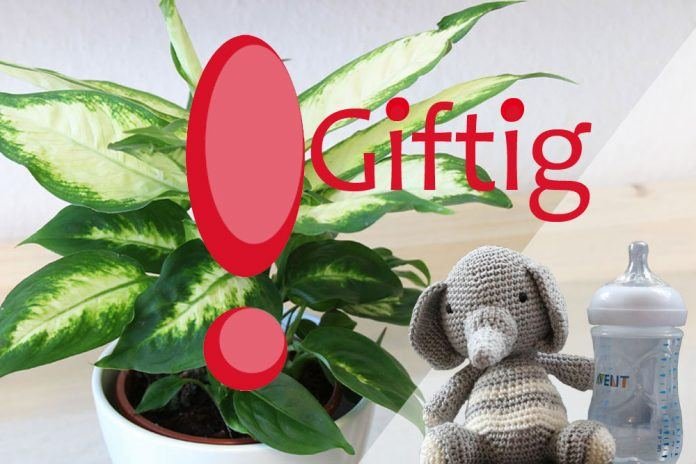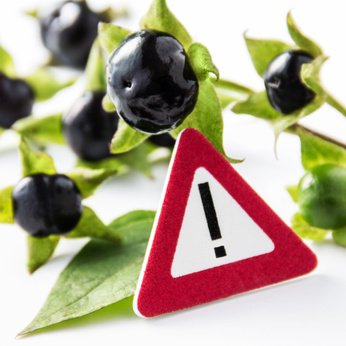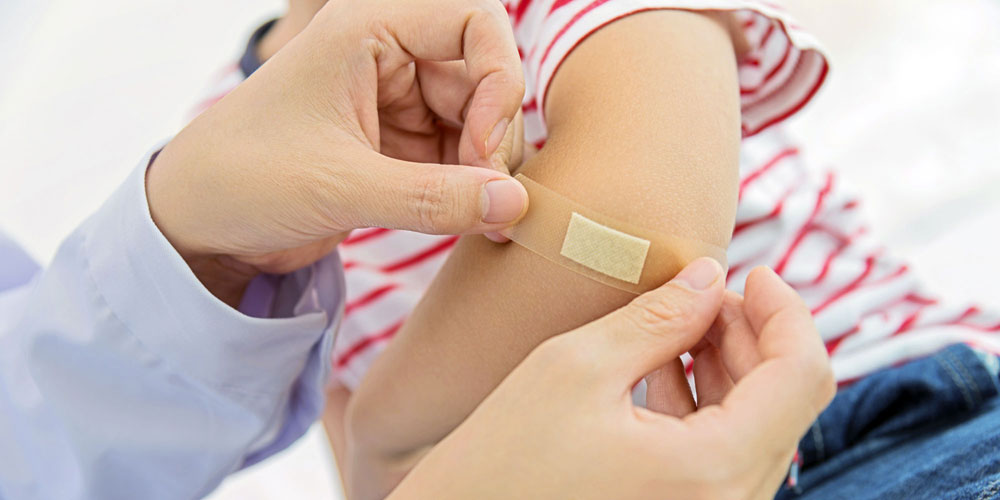
Plants are not only useful, but also an appealing ornament and are part of your well-being. However, caution is advised, as not all crops are non-toxic. Species such as the deadly cherry, yew and the foxglove are among the most important poisonous plants in Germany and even children known. However, many people bring houseplants into the house that are particularly toxic to children and babies and can lead to death in severe cases of poisoning.
houseplants
Children at risk
Why are children at greater risk?
In the household it is no problem for adults and even teenagers to understand why certain plants may not be touched or even put in the mouth. This knowledge is not understandable for small children, especially babies, and pets, because newborns explore their world with their hands and their sense of taste. It does that Life dangerous as such a small organism when houseplants are poisonous and within reach, since the first reaction is the grasping or tasting of the leaves, flowers and fruits. For this reason, it is essential to know which plants are poisonous in the house.
Poisonous houseplants
The following crops are species that are tolerated quite well by adult humans, but can sometimes strongly poison children. Many parents do not even know that they bring plants with daffodils or poinsettias that have the potential to poison their children. It is the leaves, bulbs, bulbs, flowers or roots that are consumed or touched. If you are unsure whether you have poisonous houseplants at home, check the list below.
Plants from A to D
Cyclamen (bot. Cyclamen)
As magnificent as cyclamen may be, it is poisonous. Consuming 0.3 grams of the tuber of the plant can lead to symptoms of intoxication in adult humans, higher doses lead to death. The tuber is particularly poisonous for babies, but high amounts of leaves also lead to the following symptoms.
- nausea
- diarrhea
- severe stomach pain, babies usually cry because of this
- Vomit
- sweats
- dizziness
- cramps
- if not treated, death from consumption of the tuber

Cyclamen, cyclamen
Azalea (bot.Rhododendron simsii and others)
Azaleas have it all. Just as the rhododendron is poisonous, so are the azaleas. All parts of the plant are poisonous and due to their attractive colors they are often eaten. Possible consequences are described below.
- Digestive system becomes inflamed
- convulsion
- nausea
- Vomit
- diarrhea
- strong sweats
- impaired heart activity

Zimmerazalee
Primroses (bot. Primula obconica)
Also a small, nondescript poison package. With the beautiful cup primroses, all parts of the plant are also poisonous and small children should not even touch them, otherwise it can cause skin irritation and inflammation. When consumed, the digestive tract is particularly affected and possible diarrhea and pain occur.

Primrose, Primula obconica
Buntwurz (bot. Kaladium)
An appealing plant with interesting leaf colorations, which can lead to death even after eating small amounts of leaves. Other symptoms include an irritated oral cavity, stomach pain, balance problems, seizures and tremors, and respiratory arrest. The effect is similar to Zantedeschien.

Colored roots, caladium, caladias
Christ thorn (bot.Euphorbia milii)
The Christthorn belongs to the poisonous milkweed family, just like the poinsettia, and forms a milky sap which, when consumed, irritates the mucous membranes. The milk juice causes skin irritation when touched. Special care should be taken when toddlers wipe their eyes after touching the milk juice, as this can be extremely painful.
Dieffenbachia (bot. Dieffenbachia seguine)
Dieffenbachia is a particularly poisonous plant. Young children should never touch these plants, as they shoot needles and poison when they are touched, which is aimed primarily at the face. It becomes particularly dangerous if it is consumed. Possible symptoms are the following.
- Eye burns
- Skin and eye irritation
- cramped eyelids >

Dieffenbachia camilla, Dieffenbachia
Plants from E to F
Efeutute (bot. Epipremnum aureum)
This arum plant is often cultivated as a houseplant and is easy to reach for children and even babies due to the numerous leaves. Symptoms of intoxication when consumed include increased salivation and difficulty swallowing, as well as vomiting and diarrhea.

Efeutute
Single leaf (bot.Spathiphyllum)
Also an arum plant and very irritating to the mucous membranes. They also swell. Possible symptoms of consumption are vomiting and diarrhea.

A leaf
Window leaf (bot. Monstera)
Monstera is non-toxic, but babies can be poisoned by eating the leaves. They are not as poisonous as cyclamen, but swallowing occurs in combination with a swollen tongue.

Cheese Plant
Flamingo flower (bot. Anthurium)
The flamingo flower is very popular due to its unique bloom and toddlers are fascinated by the appearance of the plants. The houseplants are very poisonous and should not be touched as they have a defense mechanism. If they are touched, they lead the poison into the skin via microscopic needles. Then redness and quite large blisters appear on the skin.

Anthurium, flamingo flower
Plants from G to N
Rubber tree (bot. Ficus)
Ficus is also not non-toxic and should therefore be banished from close proximity to babies. Poisoning is only possible here if your offspring eats the white milk juice inside the leaves and branches. The result is stomach upset and possible vomiting, rare diarrhea.

gum
Kalanchoe
These thick leaf plants attract children through their deep coloring, but should never be consumed. Kalanchoe has a poison that makes children suffer from spastic muscle contractions.

Flaming Käthchen, Kalanchoe
Coral trees (bot. Erythrina)
The berries of the houseplants are extremely tempting to the little mouths, but the fruits of these plants must never be consumed. In extreme cases, the child’s breathing can be impaired to such an extent that it stops breathing altogether. Normal symptoms of the coral tree are vomiting, nausea and gastrointestinal complaints.

Coral shrub, Solanum pseudocapsicum, Erythrina
Lilies (bot. Lilium)
All plant parts of the popular houseplants are poisonous and, due to their shape, quickly end up in the sprouts’ mouth. Nevertheless, the symptoms of poisoning only start after a large amount of plant parts have been consumed, including loss of appetite, weakness and vomiting.

Lily
Daffodils (bot. Narcissus)
Daffodils belong to spring like catkins and tulips. The daffodils are the favorite par excellence and babies in particular are often exposed to these plants and could swallow parts of the plant that are all poisonous. Possible symptoms are the following.
- strong sweats
- Vomit
- diarrhea
- stomach discomfort
- paralysis may occur when consuming large amounts

daffodils
Plants from R to S.
Knight’s Stars (bot. Amaryllis)
Knight’s stars are also poisonous, but far from being as malignant as the dieffenbachia. Young children should not eat the amaryllis bulbs, just like the flowers and leaves, although the bulb has the greatest effect. The symptoms here include racing heart, dizziness, excessive sweating and vomiting. If the leaves and flowers are touched, skin irritation occurs.

amaryllis
Crown of Glory (bot. Gloriosa superba)
Because of their spectacular appearance, children are fascinated by the crown of fame, which is, however, a ticking time bomb. It contains the toxin colchicine, which is found in the autumn timeless, for example, and is fatal even in small quantities. All parts of the plant are poisonous, but leaves and flowers are most often swallowed, which can lead to the following symptoms.
- nausea
- dizziness
- palpitations
- diarrhea
- Vomit
- Rash as soon as the plant set is touched
- Fainting, in extreme cases until death

Crown of Fame, Gloriosa superba
Radiation aralia (bot. Schefflera)
The leaves of these small trees are very uncomfortable for the young when consumed. Irritation of the mucous membranes, followed by loss of appetite and violent vomiting.

Ray aralia, Schefflerie, Schefflera arboricola
Plants with W
Poinsettia (bot.Euphorbia pulcherrima)
It is also non-toxic on all sides known and not popular poinsettia. Here all parts of the plant are poisonous, but only the consumption leads to poisoning. In particular, the mucous membranes in the mouth are irritated and can lead to unpleasant pain, which is expressed in babies especially in crying and violent crying.

Christmas star
Desert rose (bot. Adenium obesum)
Desert roses are still an insider tip for houseplant enthusiasts, but you should be aware of the toxicity of the dog poison plant if you have children. The flowers and the milky sap are the dangerous parts of the plant and lead to irritation of the mucous membranes, discomfort in the stomach and intestinal area, cramps and disturbances of the cardiovascular system up to possible respiratory failure when consumed.

Desert rose, Adenium obesum
Tip: If you have one of the poisonous plants mentioned above, you should remove it immediately or place it in such a way that even children of kindergarten or elementary school age cannot access it.
Poisoning measures
What to do in case of poisoning?
RELATED ITEMS
-

Poisonous plants in the household – danger to children and babies
Beautifully grown green plants and magnificent flowers that shimmer in all colors of the rainbow delight the eye and can create the atmosphere in a room…
-

Caution: poisonous plants from the garden – baby and family
Some plants from the garden or balcony can cause poisoning. Poisonous plants that children should stay away from…
-

Which houseplants are poisonous? Baby and family
They are not only beautiful, but sometimes also poisonous or prickly: houseplants. What parents should consider when choosing to have their child…
-

With the child in the hospital: checklist
Visit, bowel movements and Braunulen: Children in the hospital April 13, 2011, 11:33 am | mmh, t-online.de Children in the hospital: parents are for the soul…
